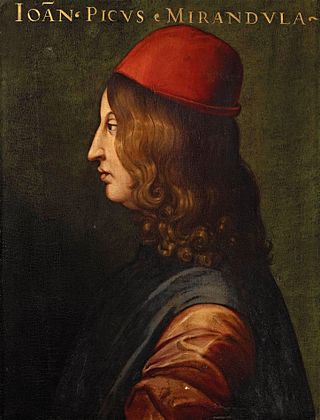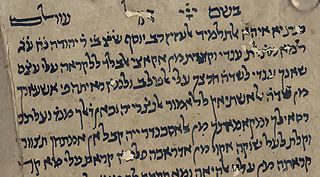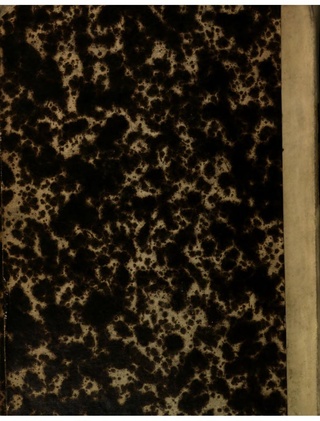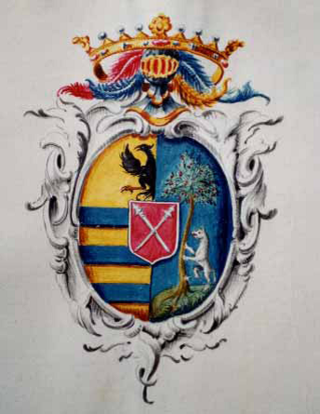Related Research Articles
Year 1463 (MCDLXIII) was a common year starting on Saturday of the Julian calendar, the 1463rd year of the Common Era (CE) and Anno Domini (AD) designations, the 463rd year of the 2nd millennium, the 63rd year of the 15th century, and the 4th year of the 1460s decade.

Giovanni Pico dei conti della Mirandola e della Concordia, known as Pico della Mirandola, was an Italian Renaissance nobleman and philosopher. He is famed for the events of 1486, when, at the age of 23, he proposed to defend 900 theses on religion, philosophy, natural philosophy, and magic against all comers, for which he wrote the Oration on the Dignity of Man, which has been called the "Manifesto of the Renaissance", and a key text of Renaissance humanism and of what has been called the "Hermetic Reformation". He was the founder of the tradition of Christian Kabbalah, a key tenet of early modern Western esotericism. The 900 Theses was the first printed book to be universally banned by the Church. Pico is sometimes seen as a proto-Protestant, because his 900 theses anticipated many Protestant views.

Jacques Gaffarel (1601–1681) was a French scholar and astrologer. He followed the family tradition of studying medicine, and then became a priest, but mainly developed his interests in the fields of natural history and Oriental occultism, gaining fluency in the Hebrew, Persian, and Arabic languages.
Ovadia ben Jacob Sforno was an Italian rabbi, Biblical commentator, philosopher and physician. A member of the Sforno family, he was born in Cesena about 1475 and died in Bologna in 1549.

Medieval Hebrew was a literary and liturgical language that existed between the 4th and 19th century. It was not commonly used as a spoken language, but mainly in written form by rabbis, scholars and poets. Medieval Hebrew had many features that distinguished it from older forms of Hebrew. These affected grammar, syntax, sentence structure, and also included a wide variety of new lexical items, which were either based on older forms or borrowed from other languages, especially Aramaic, Greek and Latin.
Bahir or Sefer HaBahir is an anonymous mystical work, attributed to a 1st-century rabbinic sage Nehunya ben HaKanah because it begins with the words, "R. Nehunya ben HaKanah said". It is also known as Midrash of Rabbi Nehunya ben HaKanahמִדְרָשׁ רַבִּי נְחוּנְיָא בֶּן הַקָּנָה.

Judah Leon Abravanel or Abrabanel, otherwise known by the pen name of Leo the Hebrew, was a Portuguese–Jewish philosopher, physician, and poet. His work Dialogues of Love was one of the most important philosophical works of his time.

Giles Antonini, O.E.S.A., commonly referred to as Giles of Viterbo, was a 16th-century Italian Augustinian friar, bishop of Viterbo and cardinal, a reforming theologian, orator, humanist and poet. He was born in Viterbo and died in Rome.

Elia del Medigo, also called Elijah Delmedigo or Elias ben Moise del Medigo and sometimes known to his contemporaries as Helias Hebreus Cretensis or in Hebrew Elijah Mi-Qandia. According to Jacob Joshua Ross, "while the non-Jewish students of Delmedigo may have classified him as an “Averroist”, he clearly saw himself as a follower of Maimonides". But, according to other scholars, Delmedigo was clearly a strong follower of Averroes' doctrines, even the more radical ones: unity of intellect, eternity of the world, autonomy of reason from the boundaries of revealed religion.

Menahem ben Benjamin Recanati was an Italian rabbi who was born and died in the city of Recanati, who devoted the chief part of his writings to the Kabbalah.

Francesco Giorgi Veneto (1466–1540) was an Italian Franciscan friar, and author of the work De harmonia mundi totius from 1525. In it Giorgio proposed an idea of the Universe created according to the universal system of proportion, which may be studied as laws of mathematics used by architects. The Cambridge History of Renaissance Philosophy describes him as 'idiosyncratic'. He wrote also In Scripturam Sacram Problemata (1536).
Yohanan Alemanno was an Italian Jewish rabbi, noted Kabbalist, humanist philosopher, and exegete, and teacher of the Hebrew language to Italian humanists including Pico della Mirandola. He taught that the Kabbalah was divine magic.
Abraham de Balmes ben Meir was an Italian Jewish physician and translator of the early 16th century.
Christian Kabbalah arose during the Renaissance due to Christian scholars' interest in the mysticism of Jewish Kabbalah, which they interpreted according to Christian theology. It is often transliterated as Cabala to distinguish it from the Jewish form and from Hermetic Qabalah.
Platonism, especially in its Neoplatonist form, underwent a revival in the Renaissance as part of a general revival of interest in classical antiquity. Interest in Platonism was especially strong in Florence under the Medici.
The history of the Jews in Sicily potentially begins as far back as two millennia, with a substantial Jewish presence on the southern Italian island before their expulsion in the fifteenth century.
Preparation for the Gospel, commonly known by its Latin title Praeparatio evangelica, is a work of Christian apologetics written by Eusebius in the early part of the fourth century AD. It was begun about the year 313, and attempts to prove the excellence of Christianity over pagan religions and philosophies. It was dedicated to Bishop Theodotus of Laodicea.
The Oration on the Dignity of Man is a public discourse composed in 1486 by Pico della Mirandola, an Italian scholar and philosopher of the Renaissance. It remained unpublished until 1496. The Pico Project–a collaboration between the University of Bologna and Brown University–and others have called it the "Manifesto of the Renaissance".

Paride da Ceresara was an Italian humanist, poet, alchemist and astrologer.
The Mirandola witch trials took place in Mirandola in the Duchy of Mirandola between 1522 and 1525. It resulted in the death of ten people, who were burned alive at the stake for witchcraft on the square.
References
- Doukas, Recherches, pp. 46, 69, 72;
- Joseph Perles, in R. E. J. xii. 249;
- idem, Beiträge, pp. 178–196;
- Brüll's Jahrb. iii. 196;
- Siegmund Salfeld, Das Hohelied, p. 117;
- Moritz Steinschneider, in Monatsschrift, 1898, p. 262;
- idem, Hebr. Uebers. p. 492;
- Hermann Vogelstein and Paul Rieger, Geschichte der Juden in Rom, ii. 75.